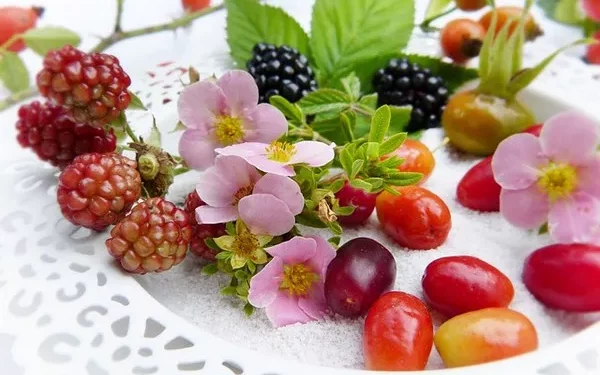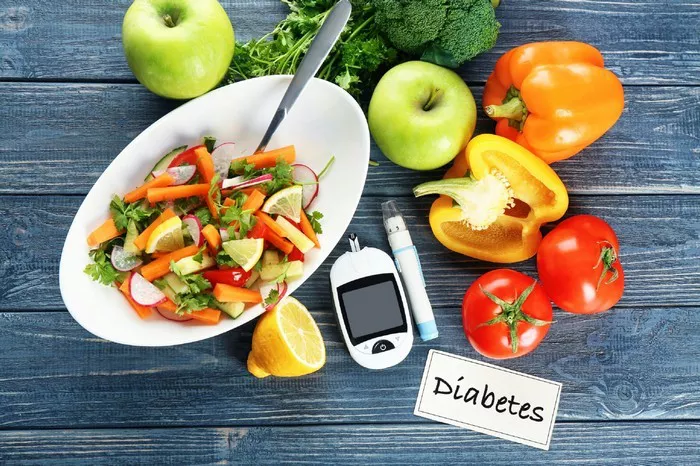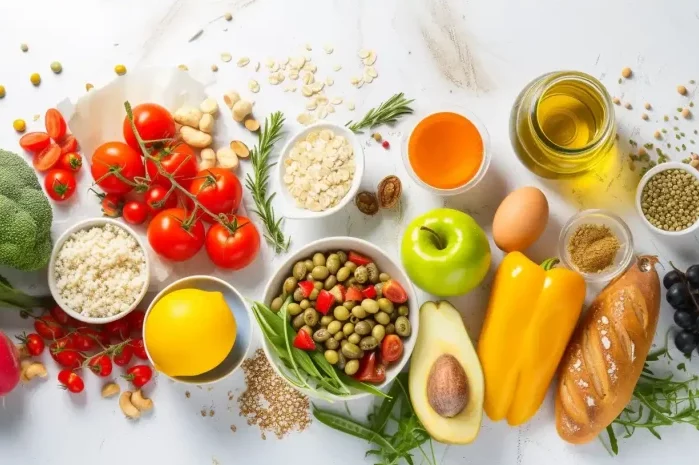Diabetes is a chronic condition that affects millions of individuals worldwide. Managing diabetes involves multiple approaches, but one of the most crucial aspects is maintaining a balanced and healthy diet. While medications and lifestyle changes play an essential role in managing the disease, a diet rich in natural, nutrient-dense foods can significantly help in regulating blood sugar levels. This article will explore a wide variety of natural foods that are beneficial for people living with diabetes, providing practical insights into their nutritional value and how they can contribute to a healthier, more balanced life.
Understanding Diabetes and Its Impact on Diet
Before delving into the specific foods that are beneficial for diabetes, it is important to have a clear understanding of the condition and how it affects the body. Diabetes occurs when the body either does not produce enough insulin (Type 1 diabetes) or becomes resistant to insulin (Type 2 diabetes). Insulin is a hormone responsible for regulating blood sugar levels, and without it functioning properly, blood sugar levels can rise to dangerous levels.
The goal of a diabetic diet is to control blood glucose levels by focusing on nutrient-rich foods that do not cause rapid spikes in blood sugar. This means avoiding refined sugars and processed foods while incorporating whole, natural foods that provide steady energy without disrupting blood glucose balance.
The Role of Fiber in Managing Blood Sugar
Fiber is one of the most important components of a diabetic-friendly diet. Soluble fiber, in particular, helps slow down the digestion and absorption of carbohydrates, preventing sudden spikes in blood sugar. Insoluble fiber supports overall digestive health and promotes a feeling of fullness, which can help prevent overeating.
Foods that are rich in fiber include whole grains, fruits, vegetables, and legumes. These foods should be prioritized in any diabetes-friendly meal plan.
Natural Foods That Help Manage Diabetes
Now let’s take a closer look at various natural foods that can aid in managing diabetes:
1. Leafy Green Vegetables
Leafy greens like spinach, kale, and Swiss chard are low in carbohydrates and high in vitamins, minerals, and antioxidants. These vegetables are rich in magnesium, which has been shown to improve insulin sensitivity. Additionally, they are high in fiber, which helps control blood sugar levels.
Adding a variety of leafy greens to salads, soups, or smoothies can make a big difference in a diabetes-friendly diet. A key advantage of leafy greens is that they are incredibly versatile and can be easily incorporated into almost any meal.
2. Berries
Berries such as blueberries, strawberries, and raspberries are rich in antioxidants, vitamins, and fiber, all of which are important for managing diabetes. The low glycemic index (GI) of berries makes them a great option for individuals with diabetes, as they do not cause rapid increases in blood sugar levels. Studies have shown that berries can help improve insulin sensitivity and reduce inflammation, making them an ideal choice for a diabetes-friendly diet.
Berries are also an excellent source of Vitamin C, which supports immune health and overall well-being. Incorporating a handful of fresh or frozen berries into your daily diet can provide both taste and numerous health benefits.
3. Nuts and Seeds
Nuts and seeds, including almonds, walnuts, chia seeds, and flaxseeds, are packed with healthy fats, fiber, and protein. These nutrient-dense foods help stabilize blood sugar levels and reduce the risk of developing cardiovascular disease, which is a common complication of diabetes.
Nuts and seeds are also rich in omega-3 fatty acids, which are known for their anti-inflammatory properties. They can help reduce the risk of diabetes-related complications, such as heart disease and kidney problems.
It’s important to choose unsweetened, raw nuts and seeds to avoid unnecessary added sugars. A small handful of nuts or seeds as a snack can keep you satisfied and prevent blood sugar dips throughout the day.
4. Whole Grains
Unlike refined grains, which can cause blood sugar spikes, whole grains are rich in fiber and help maintain steady blood sugar levels. Some of the best whole grains for diabetes management include quinoa, oats, barley, and brown rice.
Whole grains are not only rich in fiber but also provide a steady source of energy, preventing hunger and overeating. Additionally, they contain essential vitamins and minerals such as iron, magnesium, and B-vitamins, which are crucial for overall health.
Incorporating whole grains into your diet can be as simple as swapping white rice for brown rice or choosing whole-grain bread instead of white bread.
5. Cinnamon
Cinnamon is not just a delicious spice; it is also a natural remedy for managing blood sugar levels. Studies have shown that cinnamon can help improve insulin sensitivity and lower fasting blood sugar levels. This is due to the presence of compounds in cinnamon that mimic the effects of insulin, helping cells absorb glucose more effectively.
Cinnamon can be easily added to a variety of foods and beverages, including oatmeal, smoothies, and herbal teas. When choosing cinnamon, it is best to opt for Ceylon cinnamon, which is the purest form and contains fewer toxic compounds than Cassia cinnamon.
6. Legumes
Legumes such as beans, lentils, and chickpeas are excellent sources of plant-based protein, fiber, and complex carbohydrates. These foods help regulate blood sugar levels by providing a slow and steady release of glucose into the bloodstream.
Legumes have a low glycemic index and are rich in antioxidants, making them an ideal food for people with diabetes. They can be added to soups, salads, or even made into dips like hummus for a nutritious snack.
7. Avocados
Avocados are packed with healthy monounsaturated fats, fiber, and various nutrients, including potassium, folate, and Vitamin E. These healthy fats help improve insulin sensitivity and reduce the risk of cardiovascular diseases, which are common in individuals with diabetes.
Avocados also have a low glycemic index, making them a great food choice for people with diabetes. They can be enjoyed in salads, sandwiches, or simply mashed onto whole-grain toast for a nutritious and satisfying meal.
8. Cucumbers
Cucumbers are hydrating, low in calories, and have a high water content, making them an excellent choice for those managing diabetes. They are rich in antioxidants and provide a good amount of fiber, which helps control blood sugar levels.
Cucumbers can be eaten raw in salads, as a topping for sandwiches, or even as a snack on their own. They also pair well with hummus or Greek yogurt for added protein.
9. Garlic
Garlic has long been known for its medicinal properties, including its ability to lower blood sugar levels. Several studies have suggested that garlic can help improve insulin sensitivity and reduce fasting blood sugar levels. The sulfur compounds in garlic, such as allicin, are believed to play a key role in its beneficial effects on diabetes management.
Garlic can be added to a variety of dishes, including soups, salads, and stir-fries, to enhance flavor and reap its health benefits.
10. Turmeric
Turmeric, a bright yellow spice commonly used in Indian cuisine, contains a compound called curcumin, which has potent anti-inflammatory and antioxidant properties. Studies have shown that curcumin can help reduce insulin resistance and improve blood sugar control in people with diabetes.
Incorporating turmeric into your diet can be done by adding it to curries, soups, or smoothies. Pairing it with black pepper can enhance the absorption of curcumin, maximizing its health benefits.
11. Sweet Potatoes
Sweet potatoes are a rich source of complex carbohydrates, fiber, and vitamins such as Vitamin A and Vitamin C. Unlike regular potatoes, sweet potatoes have a lower glycemic index, making them a better choice for individuals with diabetes.
They are also rich in antioxidants, which can help protect against oxidative stress, a common issue in diabetes. Sweet potatoes can be roasted, mashed, or added to stews for a nutritious and diabetic-friendly side dish.
12. Green Tea
Green tea is loaded with antioxidants, particularly catechins, which have been shown to have various health benefits, including improving blood sugar control. Studies have suggested that drinking green tea regularly can help reduce blood sugar levels and improve insulin sensitivity.
Green tea is a healthy alternative to sugary beverages and can be consumed hot or cold. Drinking a cup of green tea after meals can also help prevent spikes in blood sugar levels.
The Importance of Portion Control and Balanced Meals
While the foods mentioned above are all beneficial for managing diabetes, it is essential to pay attention to portion sizes and overall meal balance. Even healthy foods can cause blood sugar spikes if consumed in large quantities.
A balanced meal should include a combination of vegetables, protein, and healthy fats, along with moderate amounts of whole grains or legumes. This helps ensure that blood sugar levels remain steady and that you are getting a wide variety of essential nutrients.
Conclusion
A well-balanced, natural diet plays a crucial role in managing diabetes and preventing its complications. By focusing on whole foods such as leafy greens, berries, nuts, seeds, and legumes, individuals with diabetes can help regulate their blood sugar levels, reduce inflammation, and support overall health. Pairing these foods with regular exercise and proper medical care can lead to improved long-term outcomes for people living with diabetes.
It is important to remember that every individual with diabetes is unique, and dietary recommendations should be tailored to personal needs. Consulting with a healthcare provider or a registered dietitian is always a good idea when making significant changes to your diet.
By incorporating these natural foods into your daily meals, you can take a proactive approach to managing your diabetes and improve your overall well-being.
Related topics:
What Can You Eat If You Have Type 2 Diabetes?






















